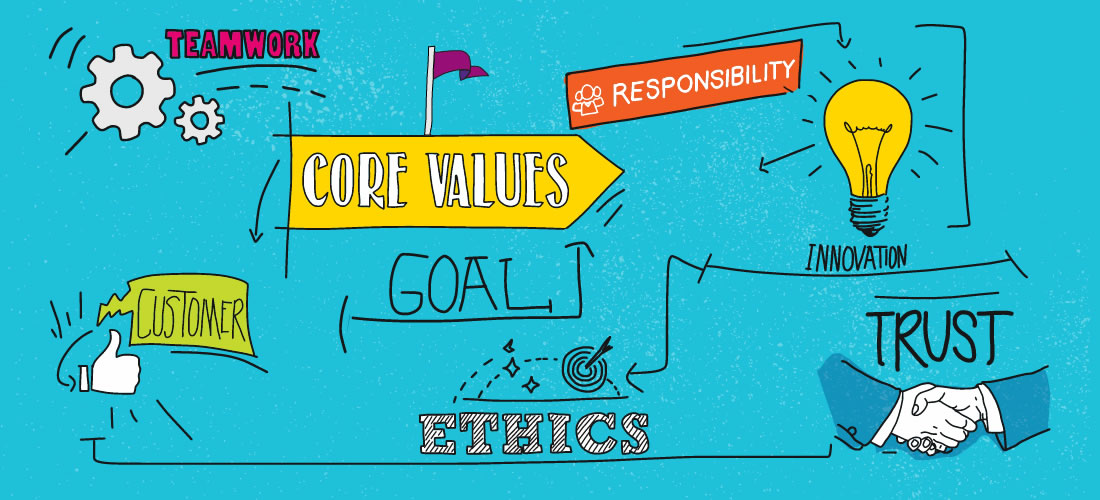6 Trends of High-Performing Organizations
You’ve heard it before – strategies don’t get executed as planned or at all, and people in your organization are not fully engaged. In fact, strategy execution eats strategy for lunch. We know this costs organizations money, but also it impedes our ability as keepers of our companies to realize and experience the dreams and aspirations we have for ourselves and our employees. The conundrum is – why do so many organizations struggle when it comes to bringing their strategies to life?
It relies on effective operations, clear strategies, and engaged employees. And that’s only the tip of the iceberg. So how does an organization make strategy execution easier? By tapping the people who are doing it well.
Root’s cross-industry, qualitative research with organizations of varying size uncovered six success routines for executing strategy. It sheds light on the far-right side of the performance curve – those leaders and organizations who are getting meaningful results. It identifies the common thread among high performers, the routines and practices they employ, and the ways in which to learn from the people executing strategies and getting phenomenal results.
By focusing on these six approaches that yield high-levels of performance, organizations can move the needle on their ability to successfully execute strategies the way they were intended.
“Without a clear purpose and knowing how their roles help deliver or support the outcome, your employees can’t effectively drive your strategy.”

Six Actions for Strategic Success

APPROACH: Nurture Your Strategy, Don’t Launch It
Developing and deploying a new corporate strategy is not something to be taken lightly. Not a single executive believes their strategy is a meaningless decree that should be shared haphazardly across an organization; hoping people just buy into it.
The key is communication and buy-in. When this is done well, it can align your organization and generate seriously beneficial outcomes. Executives spend months reading market research, listening to customer requirements, grappling with changing marketplace conditions and then forming a strategy that they believe will help the organization achieved strategic objectives. Yet, they spend very little time on how they will roll the strategy out to their people beyond the initial memo, PowerPoint or town-hall meeting. Seems counter-intuitive, right?
Think about teaching a child to ride a bike. You wouldn’t just hand over a bike, tell her to have fun and leave her to figure it out. You would teach her balance, control and skill and probably start her off with a set of training wheels first. The same mindset should be applied to deploying a strategy. Don’t just roll out a giant presentation deck and tell your people it’s time to execute. You need to take it in steps.
The high performers we looked at nurtured their strategies instead of just assuming people would know what to do. They made sure everyone understood their respective roles, what the strategy meant for them as individuals, and how their work would impact the company as a whole. It was an ongoing conversation sustained over a lengthy period of time. These high performers made it safe for their people to experience some failure along the way, helping them understand what they could learn from failure and then demonstrating what success would look like and celebrating little wins along the way.
Seeing It In Action
A large U.S. contact center decided to evolve its strategy over a three-year period. The company holds an annual conference where everyone could see where they were on strategy execution, what they could improve, when they experienced failure and what they could learn with the goal of constantly iterating and improving the strategy over time and incorporating learnings along the way.
- Conference year 1: They laid out the playing field and explained the strategy.
- Conference year 2: They talked about growth, stabilization and what they could learn.
- Conference year 3: They discussed how they could lead and continue to grow to outpace their industry and set the bar.
The concept of curiosity helps catapult strategy execution. It allows us to be conscious about the areas where capability needs to be nurtured until we secure some early wins. These then build the confidence that becomes the common way we perform. And by taking this approach, they are seeing a strategy that is fruitful, yet flexible enough to evolve over time and adjust to changing market conditions.

APPROACH: Hardwire the Last 100 Yards
Strategy is like an energy company. The strategy creators are akin to the power plant that generates the energy. The leaders who need to convey the strategy within the organization are responsible for taking that generated energy and distributing it, like power lines. The final step in the process is hardwiring the last 100 yards, from the utility pole, to the house, through the outlet, to the actual light bulb.
Oftentimes, we make it through the whole process but stop short of the hardwiring. The result is disconnects between the new strategy and daily routine; the lights aren’t on yet and the people don’t know how to flip the switch. Without a clear purpose and how their role helps deliver or support the outcome, your employees can’t effectively drive your strategy. You need to connect the dots between the strategy and the actual job.
Seeing It In Action
In many hotels, most of the people on the “frontlines” don’t know much about the strategy, let alone care about the actual performance metrics. At one leading hotel chain, they spend an intensive amount of time helping everyone – no matter their role, understand the strategy, recognize how their actions and behaviors impact the strategy and what that means to the measures the organization is using to identify success.
This translates to high levels for performance and engagement to the point that a front desk employee looks at customer satisfaction scores on a daily basis, rating herself and striving to see where she could improve. She makes it her business to work toward raising scores because she knew customer satisfaction is a huge differentiator in her company’s market.
She connected her role to a very specific metric that could move the needle for the entire organization. Actions like this create a profound sense of engagement and understanding of what the organization is trying to achieve right at the front line level.
And at this organization, they are starting to see significant results on the customer experience, customer satisfaction and growth.

APPROACH: Clear Up the Paradox of Accountability
Some people draw very definitive lines regarding accountability. Mine = my business and my urge to drive success. Yours = not my problem. At the other end of the spectrum, there are people and organizations that are collaborative to a fault. They lack any decision-making mechanism – doing everything “by committee” or consensus, which significantly hinders results, largely because they are not measuring success against a clear objective or outcome – they’re just focused on getting on the same page or reaching the same conclusion.
Collaboration and accountability need to be tied to a common goal or purpose. One other distinction between collaboration and consensus is that in collaboration, not everyone has an equal voice, but that everyone has a voice and that voice is valued and enables the group to work towards their end goal. Accountability plays a role by helping the participants that are collaborating to understand what part they play in achieving the outcomes and working their roles and responsibilities to support that outcome.
Few companies have truly figured out the right balance of collaboration and accountability, which means they either get nothing done or people will do the things they are being held accountable for or incented on, but don’t step back to look at how that impacts the big picture or how they could be better supporting other initiatives across the business.
Navigating this collaboration paradox is difficult and takes time and patience, just like nurturing the strategy itself. It involves learning from mistakes, openness and feedback loops to strike the right balance and answer the important questions. In achieving co-accountability, you create shared metrics so everyone has a horse in the race.
Seeing It In Action
A group at a large produce wholesaler encountered this very paradox between accountability and collaboration. Two teams – one in sales and one in buying – who needed to work together were finding it difficult to achieve the outcomes they were responsible for driving. For the organization to be successful, this group needed to find that balance, but they were constantly at odds with one another and ended up working towards different goals and would sway too far towards accountability or too far towards collaboration, but couldn’t find the balance.
It took two years for the group – led by the managers of each of the group – to uncover the best way to collaborate and hold themselves accountable. It required changing the team dynamics, identifying the right metrics to measure against and the incentive that drove the right behaviors.

“The best organizations are the ones that empathize with their people and create materials in a language and tone that is familiar and easy to digest.”

APPROACH: Don’t Let Your Message Get Lost in Translation
Every organization comes equipped with its own jargon, a language that everyone inside understands and uses to communicate. But, if information is presented to an audience in terms they are unfamiliar with, it loses meaning and makes it difficult for people absorb it and make it actionable. When many organizations develop strategies, the creators become so immersed in the language that while it may seem comfortable and familiar to them, the receivers likely will not feel the same way.
Organizations often use leadership jargon “shop talk” instead of the “street talk” necessary for people to process effectively. The best organizations are the ones that empathize with their people and therefore create materials in a language and tone that is familiar and easy for them to digest. If your strategy resonates with your people, they can then prioritize, interpret and simplify.
Seeing it in action
A general manager of a quick service restaurant has a five foot tall bulletin board literally covered in papers. When asked what the papers were, the general manager said they were a week’s worth of communication from the home office detailing initiatives and priorities for the restaurant. When asked how she decides what to do, she answered “we just do what keeps us out of trouble”.
The overwhelming amount of corporate orders immediately created an environment where prioritization, integration and simplification at the receiver level became all about doing what keeps things status quo, like operating in survivor mode. When the leadership team of the business was made aware of these challenges, they immediately were able to better identify the priorities for the frontline to ensure they were doing the things that the business thought were most important to deliver on the strategy.

APPROACH: Track Your Most Crucial Delivery – Your Strategy
When you send a package you probably track it. You monitor the daily progress to see if it has been received, right – maybe even requesting a return receipt email so that you know when the person signed for the package or it was left on their doorstop? You may even send that person a note or call them later just to make sure they got it and to see if they have any questions about the package or if they were excited about the new “present”. And if they didn’t understand something in the package, you may redo it and then send it back to them to look at again. So why would you roll out a new corporate strategy and not follow the same routine? Why wouldn’t you create a feedback loop like you would with other business projects?
Typically, leaders unveil a new strategy and then leave it to the managers to discuss it with their respective teams, washing their hands of the communication process, assuming it’s all understood and will be handled.
While this may simply be human nature – the task has been crossed off the list and now it’s time to move on to the next thing – the strategy creators need to stay more involved. Instead of turning it over and stepping aside, they should be asking questions.
- Did you get it?
- Did you see it?
- Did you hear it?
- Do you understand it?
- What does it look like to you?
- Can you do what needs doing?
- Is there something that doesn’t work the way it was intended?
When it comes to executing strategy, the best organizations build in robust and rapid feedback loops. This is the only way you can improve and tweak the strategy so that the intention and the reality intersect. The creators need to stay checked in and ensure they are helping their people make the connection between the strategy and the realities of their roles each day.
Seeing it in action
Everyone wanted a direct connection to the CEO at the company so they could feel like they were more in the loop on the strategy. The connection could even be outside of the organization – the people that played racquetball with the founder or would go to lunch with the CEO. Those who lacked that connection felt they weren’t privy to information about the strategy and direction of the company and future plans.
While it’s not realistic for the CEO to have lunch with everyone in the business, what was realistic for creating that feeling of “being in the loop”. The best companies use the management tier to get the rest of the organization connected and plugged in which enables them to cascade it out to the rest of the business. So this organization began to implement monthly cross-functional meeting where everyone could share and collaborate on the strategy and allow them to feel plugged in and to give all of the teams a feeling of connectiveness at scale. That then enables the manager to take that information back to their teams so that everyone now believes that are part of that inner circle.

APPROACH: Give the Whole Picture – It Matters More Than You Think
While people tolerate the conclusions of their leaders, they ultimately choose their own actions. People need to believe that what they are doing makes sense and is going to result in success for the company. A big piece of that puzzle is making sure people understand the competitive dimensions of their organization. It’s simply not enough for your people to know YOUR business. They need to be savvy about the competition and the overall market to put everything in perspective. Everyone in your organization should be familiar with:
- What’s YOUR value proposition?
- What’s YOUR competitive advantage?
- How are YOU stacking up against your competition today?
- Which competition poses the biggest threat?
Without this full-scope understanding, your people will not have the proper context to make educated and informed decisions. Plus with this understanding, they will be equipped to calibrate their choices and execution so they align with the company strategy.
Seeing it in action
A large hotel chain places a strong focus on an unconditional customer experience guarantee as their differentiator. Because their people are responsible for support and delivering on that guarantee, they have invested time in frontline employees, as that is who has a direct line of communication with the customer.
They help the front line:
- Prioritize what they need to do
- Understand the competitive landscape
- Realize why the customer experience makes such a difference
- See what the customer experience looks like
- Translate the experience into their own roles and behavior
Being armed with this information provides the frontline with enough context to make the right decisions for the larger benefit of the brand.
“The best companies use the management tier to get the rest of the organization connected and plugged in, which enables them to cascade it to the rest of the business.”

Conclusion
These six approaches enable any organization or team to adopt a high-performing mindset. Once you’ve done that, you can work with your employees the same way you would your customers – understanding, nurturing, and developing them. They’ll feel empowered, engaged, and excited to transform your organization – to move to the right side of the curve.
Examining high performers through ethnographic research gave us invaluable insights into what behaviors, cultures, and actions produce results. Regardless of industry, these six approaches were recurring themes among high performers, underscoring their value and validity. The goal for you and your organization is to apply these insights with your average performers so they can begin the journey to the other side of the curve.
Go ahead. Engage your people and see what happens to your results – to your entire organization.







